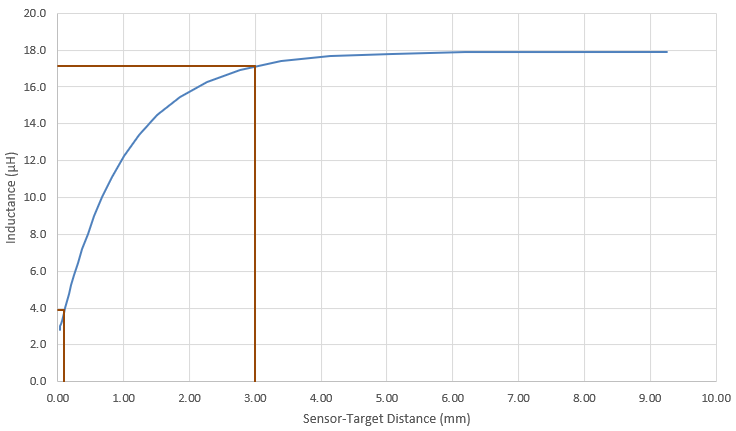SNOAA76 August 2021 LDC3114 , LDC3114-Q1
3.2 Linear Sensing Region
Section 2.2 discusses that the highest sensor sensitivity is within 20% of the total sensing range. The larger shift in inductance across distance means that target movement can be detected with nanometer resolution. Figure 3-2 is the approximate inductive response of the LDC3114 when used with a sensing coil from the LDC3114EVM. Calculate this graph for different sensor parameters and sensing distances using the Inductive Sensing Design Calculator Tool.
The red box indicates the closest and farthest desired target distance, and it was chosen to optimize the inductive response. Beyond 4.5 mm, the graph begins to level off and the measurement resolution is reduced. The higher resolution response begins to sharply decrease at a target distance of 1.8 mm. Therefore, design a sensor coil that has the largest change in slope within the desired distance range.
 Figure 3-2 Calculated Inductive Response of
LDC3114 With LDC3114EVM Coil
Figure 3-2 Calculated Inductive Response of
LDC3114 With LDC3114EVM Coil